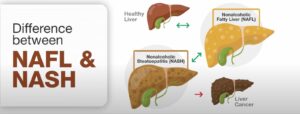
MELD Score Life Expectancy Calculator
Liver health is a critical aspect of overall well-being, and for individuals facing liver transplantation, understanding the MELD score can provide valuable insights into their condition and potential outcomes. The Model for End-Stage Liver Disease (MELD) score is a system used to measure liver damage and predict survival probability for patients in need of liver transplants. By analyzing key blood values such as Bilirubin, Creatinine, and INR, medical professionals can calculate a patient’s MELD score using a specific formula. This score not only helps determine the urgency of a liver transplant but also offers an estimation of mortality risk based on the calculated value.
Understanding the MELD Score
Calculation Process
The MELD score is calculated using the following formula:
MELD = 3.78 × ln [Bilirubin (mg/dL)] + 11.2 × ln [INR] + 9.57 × ln [Creatinine (mg/dL)] + 6.43
By plugging in the respective values for Bilirubin, INR, and Creatinine, medical professionals can obtain a numerical representation of the patient’s liver function and overall health status. This score serves as a crucial tool in prioritizing organ allocation and determining the urgency of a liver transplant for individuals with end-stage liver disease.
Mortality Estimation
Based on the calculated MELD score, healthcare providers can estimate the likelihood of mortality for liver transplantation patients. Here is a breakdown of mortality rates associated with different MELD score ranges:
| MELD Score Range | Mortality Rate |
|---|---|
| 40 or more | 71.3% |
| 30–39 | 52.6% |
| 20–29 | 19.6% |
| 10–19 | 6.0% |
These statistics highlight the importance of the MELD score in assessing the severity of liver disease and guiding treatment decisions to improve patient outcomes.
Conclusion
The MELD score is a vital tool in assessing liver and ensure function and predicting survival probability for individuals in need of a liver transplant. By understanding this scoring system and its implications, patients can make informed decisions about their treatment options and work closely with their healthcare team to improve their chances of a successful outcome. Early detection, timely intervention, and proper post-transplant management are key factors in improving the life expectancy of individuals with end-stage liver disease.

